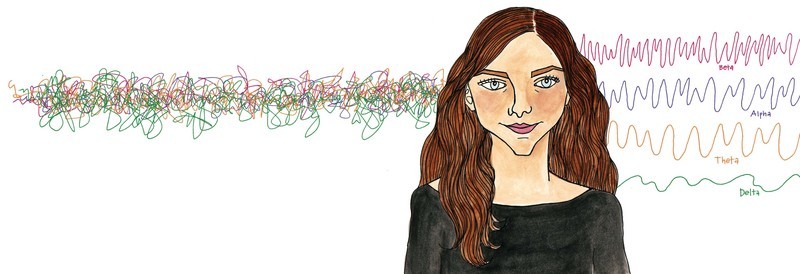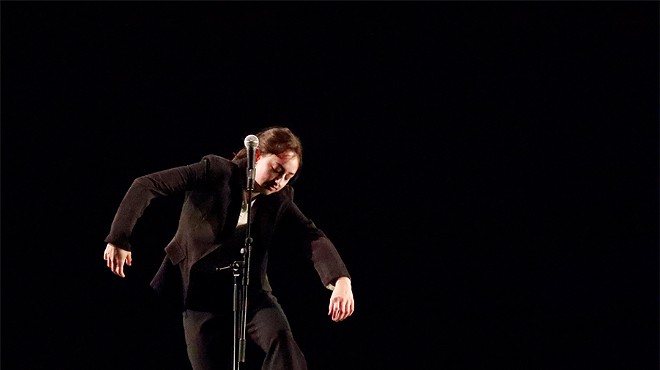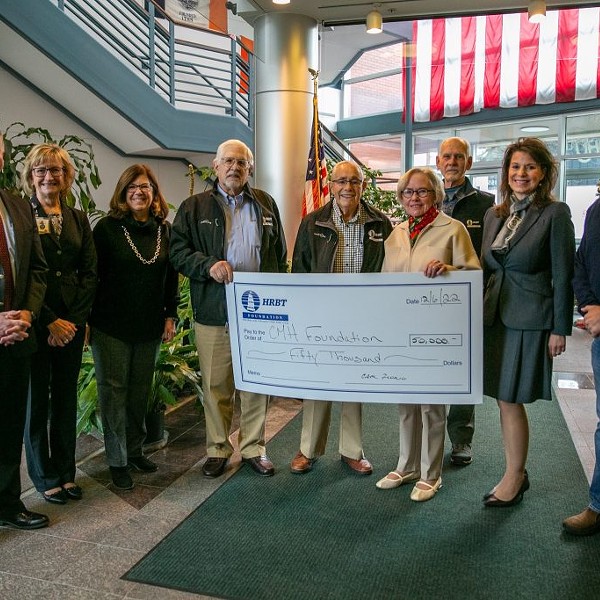We expect miracles.
If you research neurofeedback long enough, you’ll eventually come across that phrase. A miracle—by definition, a marvel or event that appears so far from human capability that it must be attributed to supernatural forces—seems an appropriate word for this noninvasive therapeutic endeavor, which is showing profound effects on those who’ve suffered emotional or physical trauma to the brain. It also seems a fitting description, since the actual mechanisms by which the healing process takes place are still a mystery.
“Inevitably, someone will say, ‘How, exactly, does this work?’” says Dr. Daniel Meyer, a psychologist who recently opened the Hudson Valley Center for Neurofeedback (HVCNF) in Poughkeepsie with Barbara Monaco, a licensed clinical social worker. “And the answer is that nobody understands exactly how this works—but we know that it works.”
From attention deficit disorder, epilepsy, and post-traumatic stress to performance optimization, the potential of neurofeedback is wide ranging and ever growing.
GETTING FEEDBACK
Neurofeedback is considered a subcategory of biofeedback, the system of analysis through which information about the body is given back to a person, usually with the help of electronic devices that can register changes in heart rate, breath, perspiration, and more. Armed with this information, people become aware of, and can learn to control, physical processes that otherwise happen involuntarily. Neurofeedback takes this idea and applies it to the brain and central nervous system, supplying the client and his or her therapist with valuable information.
How this information is put to use is the basis of a variety of approaches in the field of neurofeedback. At the HVCNF, Meyer and Monaco begin their work with a new client by doing a brain-mapping session, where a cap with sensors is placed on the head to pick up the frequencies of brainwave activity at 19 different sites simultaneously. A computer program records, analyzes, and quantifies the results, providing a quantitative electroencephalogram (QEEG). Activity at each brain site can be scrutinized individually, and communication between sites can also be evaluated. In addition, clients are given a subjective self-assessment questionnaire regarding their levels of anxiety, inattentiveness, learning difficulties, and other factors. These results are compared with the QEEG, often showing considerable correlation.
The results of the evaluation are then weighed against those in an extensive database. “We can show them the extent to which a frequency at a given site is or is not at normal limits, and we can show them the extent to which different parts of the brain are or are not communicating effectively with each other,” says Meyer. “It’s really important that we talk about both those things, because it’s not simply about how [just one] site is operating.” In order to be functioning at an optimal level, different areas of the brain need to be doing their jobs alone proficiently but also successfully working together. Take vision, for example. “It’s important how well I see in my left hemisphere and how that’s working with how well I see in my right hemisphere,” Meyer says, “and then how that’s communicated to my frontal lobes, so that they can tell me what I’m seeing and what I need to do next.”
THE MYSTERIOUS BRAIN AT WORK
The brain mapping and database provide Meyer and Monaco with information about which specific sites on the brain need to be treated, usually referred to as “hot spots”—areas that show up on brain maps in bright colors and signify some kind of distress. At subsequent sessions, sensors are placed over these locations and the attending practitioner sets parameters within the frequency of brainwave they’d like to encourage. The client then watches a computer animation—HVCNF’s software shows a jar that fills with blue cells if a client’s brain activity is moving in the right direction.
“People are simply looking at a screen,” Meyer explains, “and the brain—below the level of consciousness—captures that information and then over time begins to make adjustments in how it’s functioning. A way to think about this is when you learned how to ride a bicycle, you had to learn very complex integrated behaviors—visually, with your muscles, planning where you wanted to go. As this was happening, your brain was making adjustments and creating neuropathways so that you would have an efficient neuropathway for bicycle riding. At no time during that learning experience did you have awareness of what your brain was doing, and your brain did the job perfectly well.”
The entire exercise happens under the level of awareness and any mindful attempt at control: You can’t consciously force the blue cells, or whatever other animation may be used, to accumulate. “If you try to make something happen, in all likelihood you’re going to interfere with the process,” Meyer says. “If you allow it to happen, it will. It’s very similar to what people do when they meditate—if you try to meditate, you’re probably not going to meditate. But if you pay attention to your breath and allow your muscles to relax and choose a single focus, after a while your brain will make the adjustment and you’ll fall into a meditative state.”
Since opening in May, HVCNF has treated clients with varying symptoms and has demonstrable results. As one example, Monaco presents handwriting samples from a client that over four weeks of treatment evolve from erratic and almost illegible to notably smoother, clearly readable words.
TASTES OF OUR OWN MEDICINE
Another neurofeedback technique, the LENS (Low Energy Neurofeedback System), is performed at the Stone Mountain Center for Counseling and Biofeedback in New Paltz, which is directed by psychotherapist Dr. Stephen Larsen. A method developed by Dr. Len Ochs, LENS involves putting energy into the system; radio waves that mimic a person’s dominant brain frequencies are reflected back as a variation of that frequency. Clients are exposed to a weak wave for an extraordinarily short amount of time, usually just a couple of seconds. Unlike other methods of neurofeedback where a client’s brain makes adjustments based on visual cues from the animation (which informs the client if their brain is performing within set parameters), clients are not viewing anything during a LENS session.
Larsen discovered Ochs’s work in 1996 and has been studying and applying it ever since. “This was something brand new, cutting edge, a sort of homeopathy with the tiniest dose,” he says. “Then we skillfully and carefully watched the results, which were extraordinary. People with years of seizures were getting better, those with acute depression, pain syndromes, even paralysis of body parts—they were all getting better.”
Larsen’s new clients begin treatment with a brain-mapping session and by answering a questionnaire that Ochs developed, which touches on sleep patterns, energy level, emotional stability, and more. “Sometimes people are astonished at how many questions they answer as yes,” Larsen says. “The reason for so many problems is that they’re not separate problems; they all relate to the central nervous system.” He says he works with clients to restore function, which eliminates many of their symptoms and usually results in a more proactive approach to taking care of themselves.
While some neurofeedback camps were training brainwaves using low frequencies, as in alpha-theta training, other camps were looking to high frequencies, like SMR (sensory motor rhythm) and beta, to achieve results such as clarity and attentiveness. Larsen says, however, that according to Ochs, “it’s neither going high nor low. Instead, it’s the flexibility to go wherever you need to” for improvement. The idea of flexibility is a signature of Ochs’s work with LENS.
Larsen is author of The Healing Power of Neurofeedback: The Revolutionary LENS Technique for Restoring Optimal Brain Function (2006, Healing Arts Press). Ten years in the making, the book provides an array of case studies that chronicle the ranging symptoms of clients dealing with bipolar disorder, bereavement, traumatic brain injury caused by gunshot wounds, and many more. Mike Quick of Chichester is one case study in a chapter dealing with epilepsy. His seizures began after a bad car accident and continued, at least once a month, for decades. Just six months of regular neurofeedback began to make a difference. “I feel younger, better, stronger, physically fit, and I’m in a lot better shape than I was 20 to 30 years ago,” says Quick. “I owe it all to neurofeedback.” Quick has been a client of Larsen’s for 11 years and still sees him twice a month.
BEYOND THE CLINIC
The enigmatic nature and potential of neurofeedback is not just attractive to clinical providers. Lincoln Stoller, who has a background in physics and computer programming, has a neurofeedback area set up on the second floor of his home in Shokan and gives sessions to friends and acquaintances. His interest in it takes a different direction.
“You can see how that’s sort of very Western, in the idea that there’s a normal way to be and people should be encouraged to behave neurologically normally,” Stoller says. “A lot of this whole field has been built on medical remediation—that’s where the patients come from, what society expects, what doctors are familiar with, and I frankly don’t think that’s the promise of it. I think it’s very open-ended. I think it can do everything from enhance people, to evolve people, to cure individuals and social groups,” Stoller says.
Earlier this year, researchers at the University of London’s psychology department presented a theory about the alpha-theta technique in neurofeedback and its apparent “enhancement of technical, communication, and artistic domains of performance in the arts” when tested on musicians and dancers. And over the summer, BMC Neuroscience ran a story about eye surgeons undergoing neurofeedback: Not only did surgical technique improve with treatment, but the actual time to complete surgery was reduced as well. “Everything that the brain does is here—not just making people able get back to work on Monday,” notes Stoller.
Stoller trained with Dr. Larsen and at seminars given by Dr. Siegfried Othmer and Susan Othmer, who are, respectively, chief scientist and clinical director of the EEG Institute, based in Woodland Hills, California. Stoller, who has an interest in culture, anthropology, and shamanism, pursues multiple goals with neurofeedback, from vision augmentation to aiding addiction recovery among the First Nations people.
“Very little of it’s understood,” says Stoller, “and I think that’s very important. Because if you think you understand it, and you know what it’s going to be used for, then you foreclose all the good questions that no one has answers to.”
GRAPPLING WITH MAINSTREAMING
As the field of neurofeedback picks up steam, there’s been more call for regulation and licensure of practitioners. Some practitioners, like Meyer at the HVCNF, have pursued certification by organizations such as the Biofeedback Certification Institute of America, which is open only to clinical healthcare professionals with a degree in psychology, nursing, counseling, or therapy. Such requirements block neurofeedback certification for many practitioners, like Stoller, who do not have a background in mental health or a related field. Stoller feels that while the effort to license neurofeedback practitioners could increase the quality of service, the field will then become “dominated by people with more letters after their name,” and leave out others with different strengths “who, in a sense, have the most to contribute and the broadest vision.”
The question of practitioner qualifications, however, seems secondary to a bigger issue—the fact that many insurance companies don’t recognize neurofeedback as a viable, and therefore reimbursable, therapy. Some organizations, like Children and Adults with Attention Deficit/Hyperactivity Disorder (CHADD), point to procedural insufficiencies in neurofeedback studies that make endorsements of the techniques difficult; criticisms include a lack of control groups, small sample sizes, and a lack of randomization, among other points. Meyer says that a recently published meta-analysis of studies on neurofeedback and ADHD should put most of these criticisms to rest, having given the treatment the highest rating (level 5) for efficacy and specificity.
“The problem with profit and health is that they are clearly often at cross-purposes with each other,” says Larsen. “In the 1990s, the maker of Ritalin paid a ‘disinformation dude’ to go around and defame biofeedback as being ‘experimental’ and dangerous, even though, by nature, it puts nothing alien into the body and simply helps it regulate itself. He was revealed to be on the retainer of the pharmaceutical company, taking a robust six-figure annual stipend for bad-mouthing something harmless and self-empowering that could help millions of families.”
The feeling at the HVCNF is similar. “I think that there are huge political forces at play related to it not being reimbursable at this point,” says Monaco. “It is a noninvasive, nonmedication-related treatment for many disorders that have historically been treated with antidepressants or amphetamines, and so there’s a lot of resistance to going away from that model because it’s so lucrative.”
But for legions of people like Laurie Weeks, a writer from New Paltz who suffered from bipolar disorder type 2 and associated ADHD, the therapy has been a life-changing one. “Instead of spending 10 minutes with a psychiatrist and going away with a fistful of prescriptions,” she says, “there’s an enormous sense of collaboration with both Dr. Larsen and the rest of the staff in working out a unique therapy tailored for my particular brain.”
Resources
Hudson Valley Center for Neurofeedback (845) 473-4939
www.hvcnf.com
Lincoln Stoller (845) 594-7578
www.tengerresearch.com
Stone Mountain Counseling Center (845) 658-8083
www.stonemountaincenter.com
















